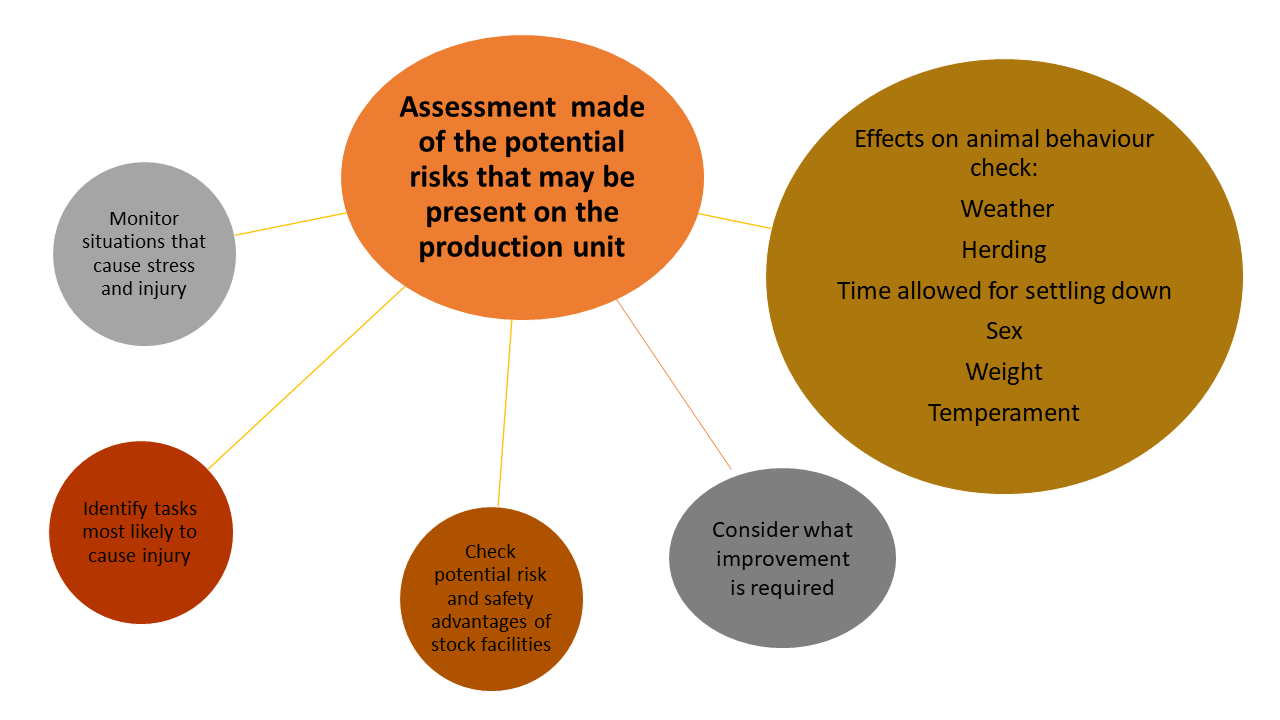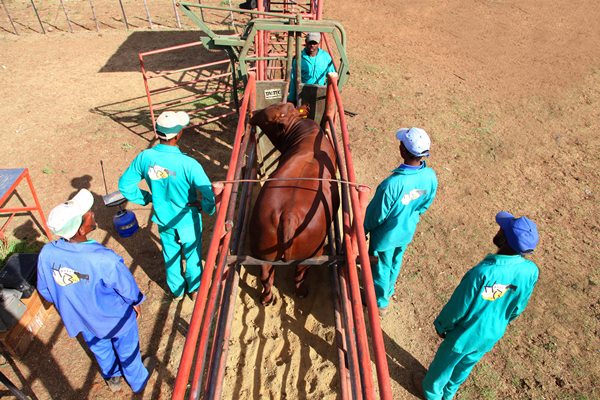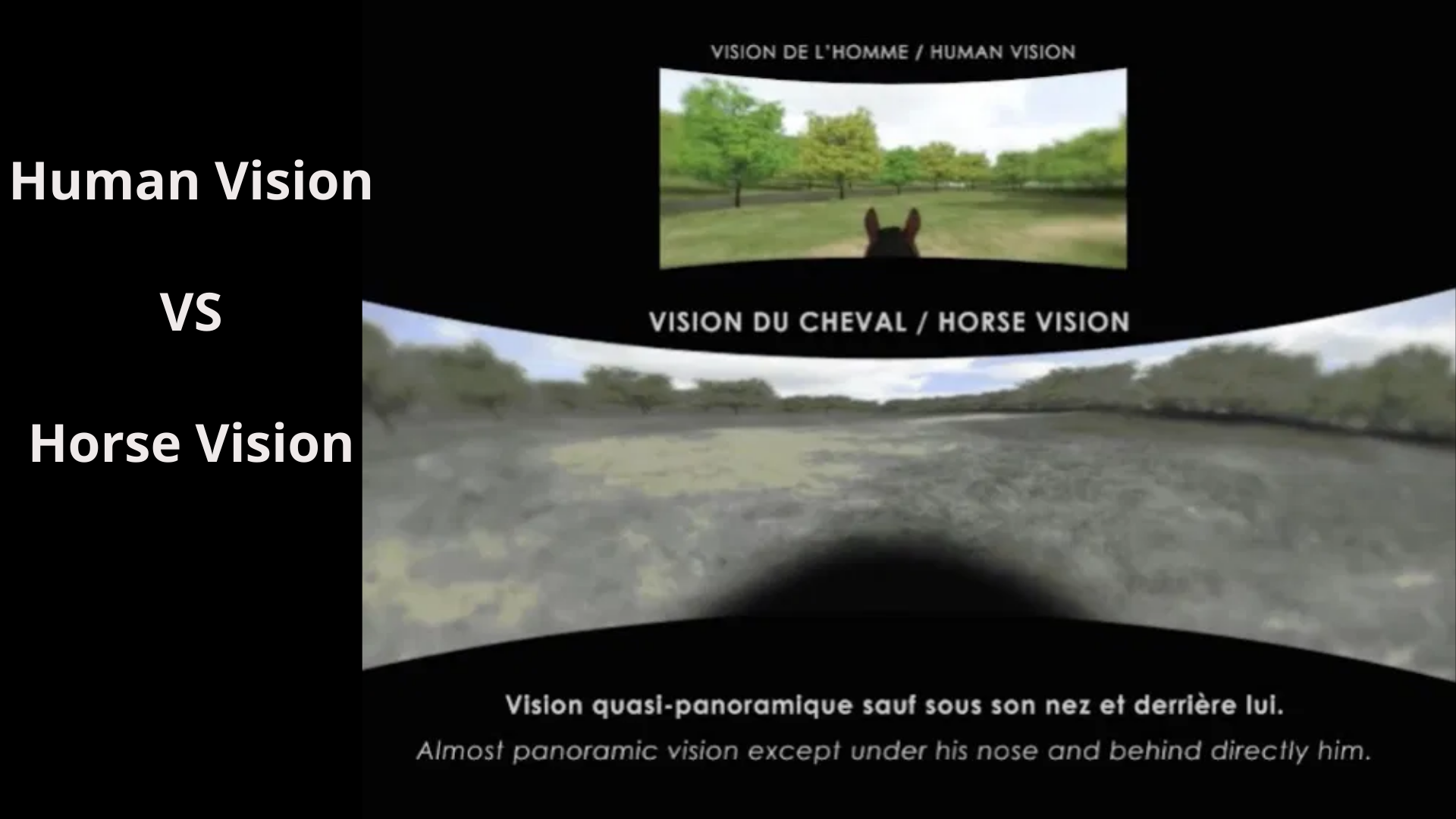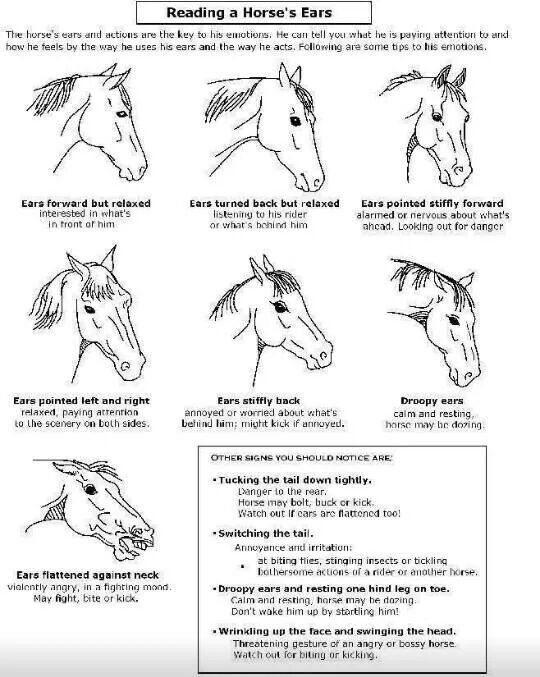All farm animals including cattle, sheep, goats, horses, pigs and poultry, although domesticated, can still have wild tendencies. As you will know from having studied Defensive Animal Behaviour at NQF Levels 1, 2 and 3, farm animals may behave defensively or aggressively under various circumstances.
Such circumstances will include the breeding season (when the females are in oestrus or the males are in rut), when they are caring for their young (after birth), or when they feel threatened or are in pain. Animals may also act aggressively if they have certain diseases such as rabies.
Even without the exhibition of aggressive or defensive behaviour an animal may pose a safety risk due merely to its size. For example, a cow in a crush could break your arm if you are working through the railings and she moves to one side. It is very important that you are able to distinguish between these different situations and respond accordingly.
Gathering Data Regarding Animal Behaviour And Factors That Could Influence Animal Behaviour
Before undertaking any work on an animal production facility, a quick, albeit thorough, assessment should be made of the potential risks that may be present on the production unit.
- Check accident records to identify tasks most likely to cause injury. Evaluate the records to see if there are new records of accidents.
- Consider situations that cause stress and injury, and monitor the situation closely.
- Consider effects of weather and herding on animal behaviour, and time allowed for settling down. Take also into account sex, weight and temperament of the animals.
- Check potential risk and safety advantages of stock facilities, including mechanical aids and work layout.
- Consider what improvement is required before you can confidently be sure that safety is maintained.

The following questions should be asked and answered:
- At what stage of production is the herd/flock? (For example, are they in their breeding season, have they already given birth to their young, are the young being weaned?)
- Is the herd or flock divided into different groups that may be at different stages of production? (For example, one group of animals may be in their breeding season, while another group have already given birth to their young – this means that as you move from one area of the farm to the next – from one camp to the next – the herds may respond differently to human interaction)
- Are the animals due to undergo any type of processing treatments? For example: do the animals need to be herded into a crush or handling facility and will processing treatments such as branding, castration, vaccinations or dipping take place?
- What Breeds ? For example, are the farm animals small stock such as sheep or goats, or large livestock such as cattle or horses?
- What breeds of animals are present? For example, are the breeds the more docile types such as Holstein/Friesland cattle or aggressive breeds such as Brahman?
- Are the handling facilities in good condition? For example, are the floors of sloping areas grooved or rubberised for better grip? Are the railings solidly planted? Are there pieces of wire or metal jutting out of the sides of the crush? Do all the gates open and close well? Has shade been provided for humans and animals? Are the water troughs working and the areas around the water troughs dry and compact?
- Do the handling facilities allow an effective flow of animals through the facility? For example, to sorting gates open in both directions to allow animals to be sorted in different ways? Can animals be moved through the system in both directions? Do the handling facilities allow the handlers to work on the outside of the containment area?
- What time of the day is it? For example, is it still early in the morning or late afternoon when it is still cool, or is it already getting to the hottest part of the day?
Understanding the Attributes Of Defensive Behaviour
Animals' senses function much like those of humans; however, animals may detect and perceive their environments very differently as compared to the way humans detect and perceive the same surroundings.
Animals, with their wide-angle vision, have a reduced ability to perceive depth and to judge distances.
Cattle and horses have panoramic vision, which means they can see everything except something that is directly behind them. Sudden movements behind cattle will "spook" them because they can see a quick movement but cannot distinguish how close the perceived "threat" is nor can they determine the seriousness of the movement. In response to sudden movements, fear may develop in the animal's mind that triggers a "flight" or "fight" response. While most animals are colour-blind, their hearing is extremely sensitive relative to humans, especially to higher frequency sounds.
Knowing these characteristics of animal vision and hearing, we can understand why animals are usually balky in unfamiliar surroundings. Experienced animal handlers should recognize that animals perform and or produce best when their environment is as comfortable as reasonably possible.
Avoid extremes in temperature, humidity, lighting, and other environmental conditions such as loud noises, sudden movements, excitement, and harsh treatment. Not only do animals produce and perform better when extremes in their environment are reduced, they are also more predictable. Animals with histories of traumatic exposure are more likely to overreact to changing surroundings or when confronted with unfamiliar circumstances. Be extra cautious when animals are being medically treated or examined, loaded, moved, or during other handling operations.
People who work with animals recognize the ability of animals to communicate despite an inability to speak. Most species have and display characteristic signs of fear, aggression, and contentment. These are observed as:
- Raised or pinned ears
- Raised tail
- Erection of the hair along the back (Angry dog)
- Bared teeth
- Pawing the ground (sometimes coupled with vigorous shaking of the head)
- Snorting
- Showing a greater profile (Cat raises its hair to look bigger or a bird will puff out its feathers to look bigger)
- Shaking the head rapidly from side to side (Young cattle or an alerted bull)
Correct animal control systems and handling methodologies – general principals Specific handling methods, like warning signs, vary with species. However, some general handling rules for all animals include the following:
- Most animals respond favourably to routines having calm, deliberate responses.
- Avoid loud noises and quick movements.
- Be patient; never prod an animal when it has no place to go.
- Move slowly and deliberately around livestock.
- Touching animals gently can be more effective than shoving and/or bumping them.
- Respect rather than fear livestock. Breeding stock is highly protective and often irritable. Disposition deteriorates with age and parturition. Old breeding stock can be deceptive, unpredictable, and large enough to be dangerous.
- Special facilities should be provided for breeding stock (especially for large males).
- Most animals are highly protective of their young. Be especially careful around new-born animals.
- Male animals should be considered potentially dangerous at all times.
- Proper equipment and facilities are necessary to assure safety. Extreme caution should be practiced when handling male animals!
- The size, mass, strength, and speed of both individual animals and herds of animals should never be taken lightly.
- Animals will defend their territory and should be worked around keeping in mind that there is always the potential for harm.
- Always provide an escape route (always leave yourself a way out), especially when working in close quarters, with sick or injured animals, and/or under adverse conditions (i.e. severe storms etc.).
- Exercise extra care around unfamiliar animals and enforce extreme care if strangers must be around your animals.
- Maintain equipment and facilities in good repair and exercise "good housekeeping" practices.

Click here to view a video that explains cattle handling tips.
Click here to view a video that explains best practice cattle handling.



